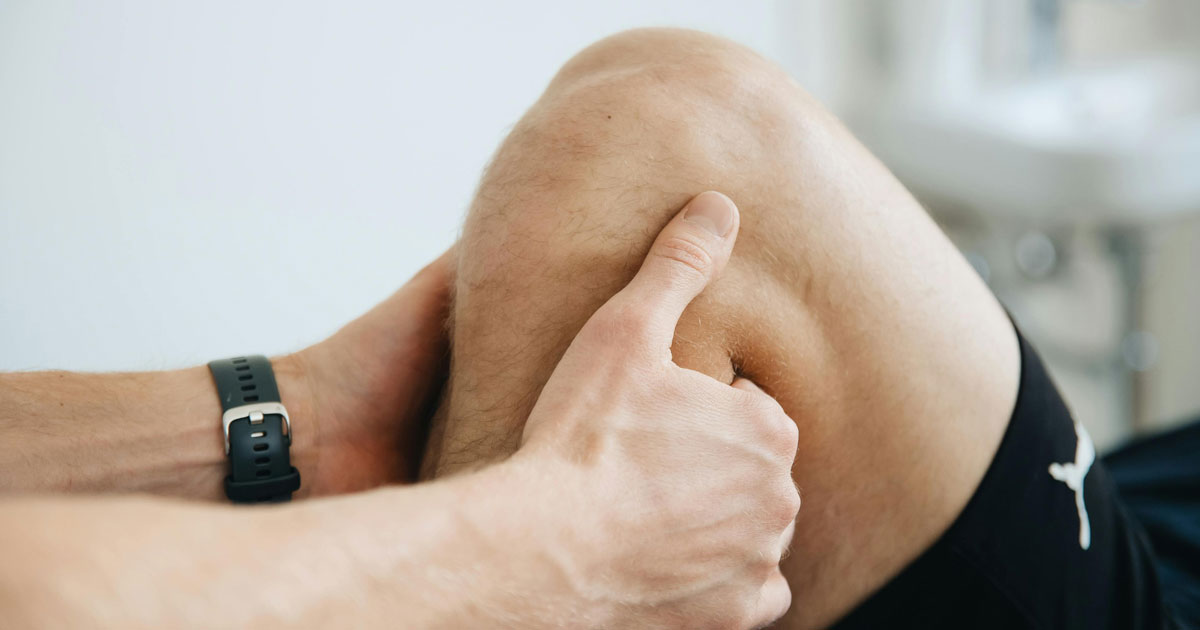
Knee Ligament Injuries: Understanding ACL, MCL, PCL, and LCL Sprains & Tears
Knee ligament injuries are a common setback for athletes and active individuals. Whether you're dealing with an ACL, MCL, PCL, or LCL injury, understanding these vital knee ligaments is the first step toward recovery. These injuries can result in significant pain and instability, keeping you sidelined from your favourite activities. This guide delves into the anatomy of the knee, common ligament injuries, and treatment options.
The knee joint relies on four primary ligaments for stability:
- Anterior Cruciate Ligament (ACL): Controls forward and rotational stability.
- Posterior Cruciate Ligament (PCL): Prevents backward movement of the shinbone.
- Medial Collateral Ligament (MCL): Stabilises the inside of the knee.
- Lateral Collateral Ligament (LCL): Supports the outside of the knee.
Each of these ligaments connects the thigh bone (femur) to the shin bone (tibia), working in harmony to protect the knee joint. Let's delve deeper into these ligaments and the injuries they can sustain.
Anterior Cruciate Ligament (ACL) Injuries
The ACL is often the first ligament that comes to mind when discussing knee injuries. Its primary role is to prevent excessive forward movement and provide rotational stability of the tibia in relation to the femur. ACL injuries frequently occur during non-contact situations that involve sudden deceleration, pivoting, or landing from a jump.
Symptoms of an ACL Injury:
- A distinct "pop" sound at the time of injury.
- Rapid swelling due to bleeding within the joint (hemarthrosis).
- Pain upon weight-bearing.
- A sensation of the knee "giving way."
Posterior Cruciate Ligament (PCL) Injuries
PCL injuries are less common than ACL injuries but can still occur due to trauma during sports or accidents. The PCL prevents the tibia from sliding backward relative to the femur.
Mechanism of Injury:
Unlike ACL injuries, PCL injuries often result from direct trauma, such as a blow to the front of the knee. A typical example is the "dashboard injury," where the knee impacts the dashboard during a car accident, forcing the tibia backward. PCL injuries can also occur from hyperextension during athletic activities.
Medial Collateral Ligament (MCL) Injuries
The medial collateral ligament (MCL) is one of the side-to-side stabilisers of the knee, and MCL injuries are common. The MCL resists valgus stress, which is the force pushing the knee inward.
How MCL Injuries Occur:
MCL injuries typically happen from a direct blow to the outside of the knee, causing it to buckle inward. They can also occur during non-contact activities, such as pivoting or side-stepping.
Lateral Collateral Ligament (LCL) Injuries
The LCL protects the knee from varus stress, which is the force pushing the knee outward.
Causes of LCL Injuries:
LCL injuries usually result from a direct blow to the inside of the knee. Non-contact varus stress during sports can also lead to LCL injuries, although this is less frequent than with MCL injuries.
Understanding the Grades of Knee Ligament Sprains/Tears
Knee ligament injuries are classified as sprains or tears, with severity graded as follows: - Grade I Sprain: Mild, with microscopic tears and no significant instability. - Grade II Tear: Partial tear with some laxity in the knee joint. - Grade III Tear: Complete tear resulting in significant instability.
Diagnosing Knee Ligament Injuries: The Role of Imaging
Accurate diagnosis requires a clear view of the knee's internal structures. At Spectrum, we often recommend an MRI scan. MRI is the gold standard for evaluating soft tissues like ligaments, providing detailed images to guide treatment planning.
Treatment and Rehabilitation at Spectrum: Sports Chiropractic & Physiotherapy
Treatment depends on the severity of the injury. Initial management often involves bracing and immobilisation to protect the knee and promote healing. Specific bracing protocols vary depending on the injured ligament.
Surgical Intervention:
Severe (Grade 2 or 3) tears or multiple ligament injuries may require surgical consultation. If surgery is necessary, Spectrum can assist with post-operative rehabilitation.
Conservative and Post-Operative Care Goals:
Whether you undergo surgery or opt for conservative management, the goals are similar:
- Pain and Swelling Reduction: Techniques like Game Ready therapy and manual lymphatic drainage can help.
- Restoring Mobility: Joint mobilisation and soft tissue techniques.
- Strengthening and Stabilisation: Targeted exercises for the quadriceps, hamstrings, and core, along with proprioceptive training.
Rehabilitation Techniques:
- Game Ready hot and cold contrast therapy
- Alter-G treadmill
- Manual therapy
- Tailored exercise programs
Knee ligament injuries need expert management. With an accurate diagnosis, suitable bracing, and a personalised rehabilitation program, you can optimise your recovery. Sports chiropractic and physiotherapy are essential in both conservative and post-operative care, addressing pain, mobility, strength, and biomechanics. Contact Spectrum today to learn more and start your journey back to full activity!
Contact us today (02) 9889 3344
